What Is Hydraulic Cement | Hydraulic Cement Uses | How to Apply Hydraulic Cement | Advantages & Disadvantages of Hydraulic Cement
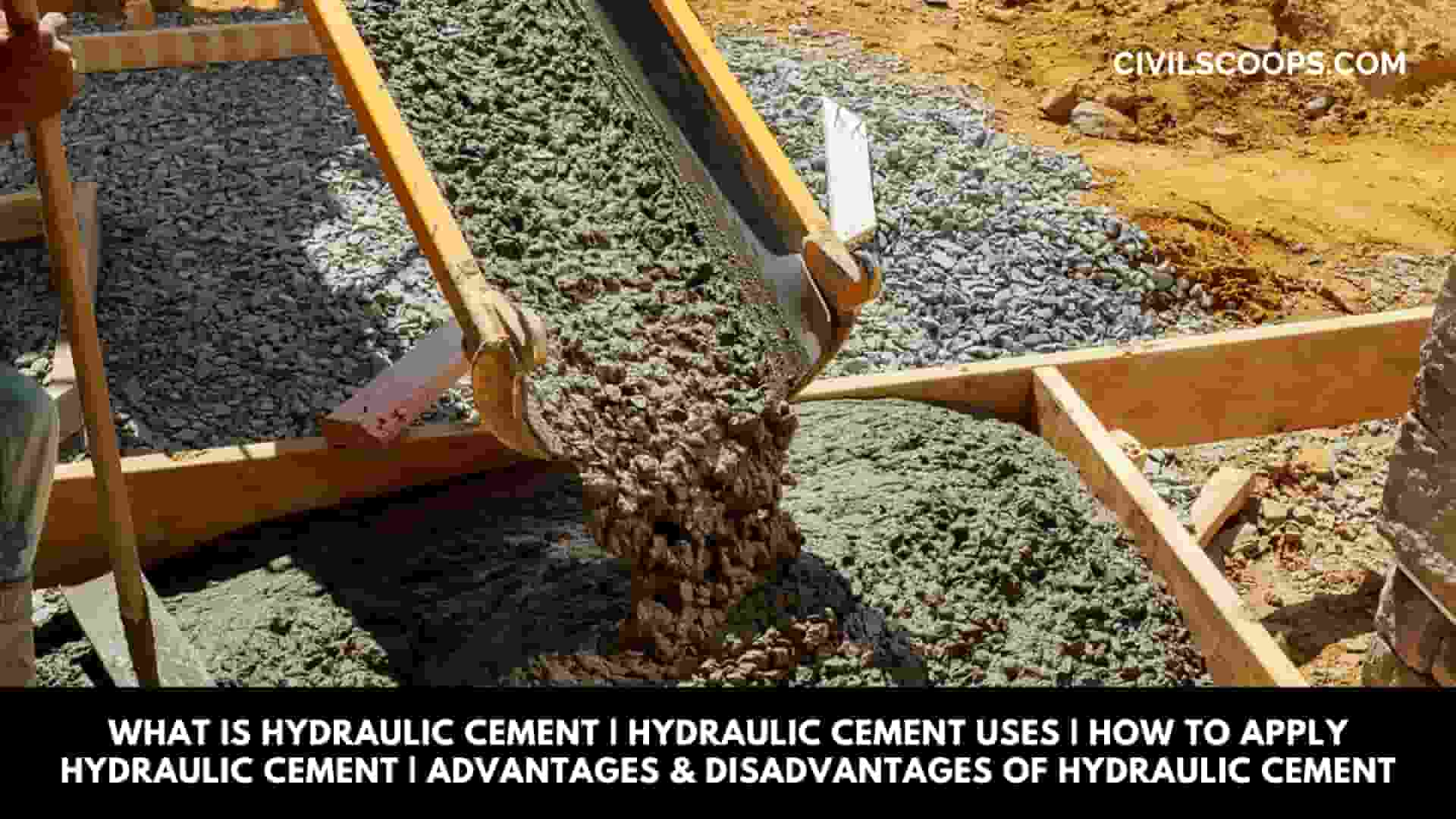
Table of Contents
Introduction of Hydraulic Cement
Water is the biggest enemy of the Civil Engineering Structures. Water can cause great damage to the structures. It is very necessary to protect the structures from moisture which can cause huge damage to the structures.
The other types of cement cannot be used for the construction of the structures which are in contact with water. If we construct the underwater structures with the normal cement then it will undergo corrosion and get damaged.
But you might think that there are many civil engineering structures are constructed like bridges, dams which are in constant contact with water. So how it is possible to built the structures in the water?
There is a special type of cement which is used for the construction of structures which remains in the contact with water popularly known as Hydraulic cement.
In this article, you will get to know all about the Hydraulic cement and the Hydraulic cement applications.
What Is Hydraulic Cement?
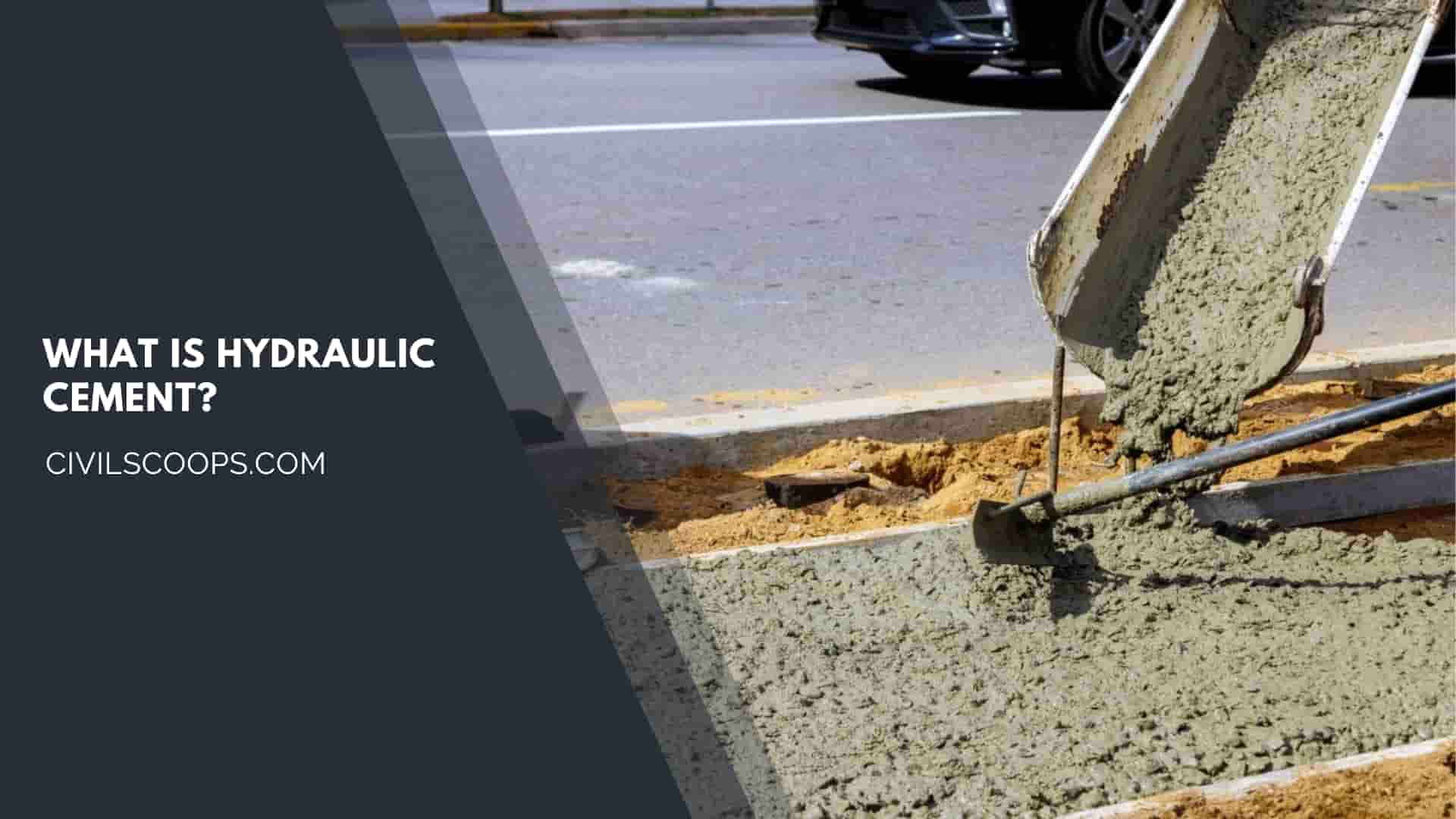
Hydraulic cement is a special type of cement which sets quickly and get hardened with the addition of water to the finely ground cement is known as the Hydraulic Cement.
In ancient times, the hydraulic cement was firstly used by the Romans. Hydraulic cement is best suitable for the structures which are constantly in the contact with water.
Hydraulic cement is nowadays widely used in the Construction Industry because it is non-shrinkable, non-corrosive and non-rusting.
Hydraulic cement has the ability to react with water under ambient conditions to form a hardened and water-resistant product. Different blends of modern Portland cement are commercially referred to as the Hydraulic Cement.
Hydraulic cement is a product which generally used to stop water and sets quickly when exposed to the water. Hydraulic cement sets within 5-10 minutes after adding water to it.
It is a type of cement which is similar to the mortar. Hydraulic cement is widely used in the Construction Industry for sealing the structures below grade and in the conditions where structures are submerged in water.
Chemical Composition of Hydraulic Cement
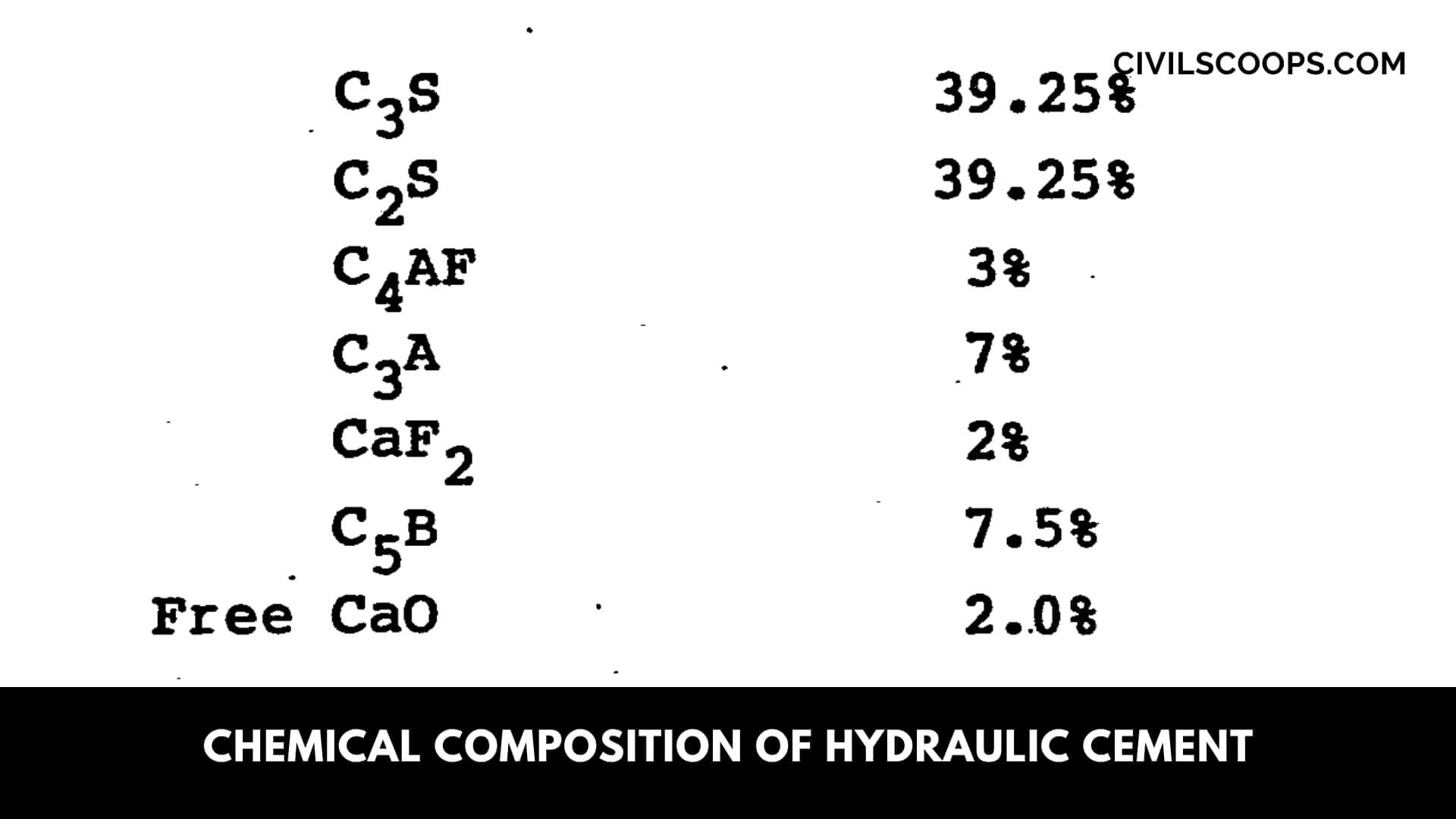
There are mainly four components of the hydraulic Cement
- Belite (2CaO·SiO2)
- Alite (3CaO·SiO2)
- Tricalcium aluminate/ Celite (3CaO·Al2O3)
- Brownmillerite (4CaO·Al2O3Fe2O3)
The mechanical properties of the hydraulic cement are given by the silicates.
Some additives are also needed for special properties such as greatly reduced setting and curing time, prevention of shrinking, being able to be used underwater etc.
Also Read: How Cement is Made | Cement Ingredients | History of Cement
How Does Hydraulic Cement Works?
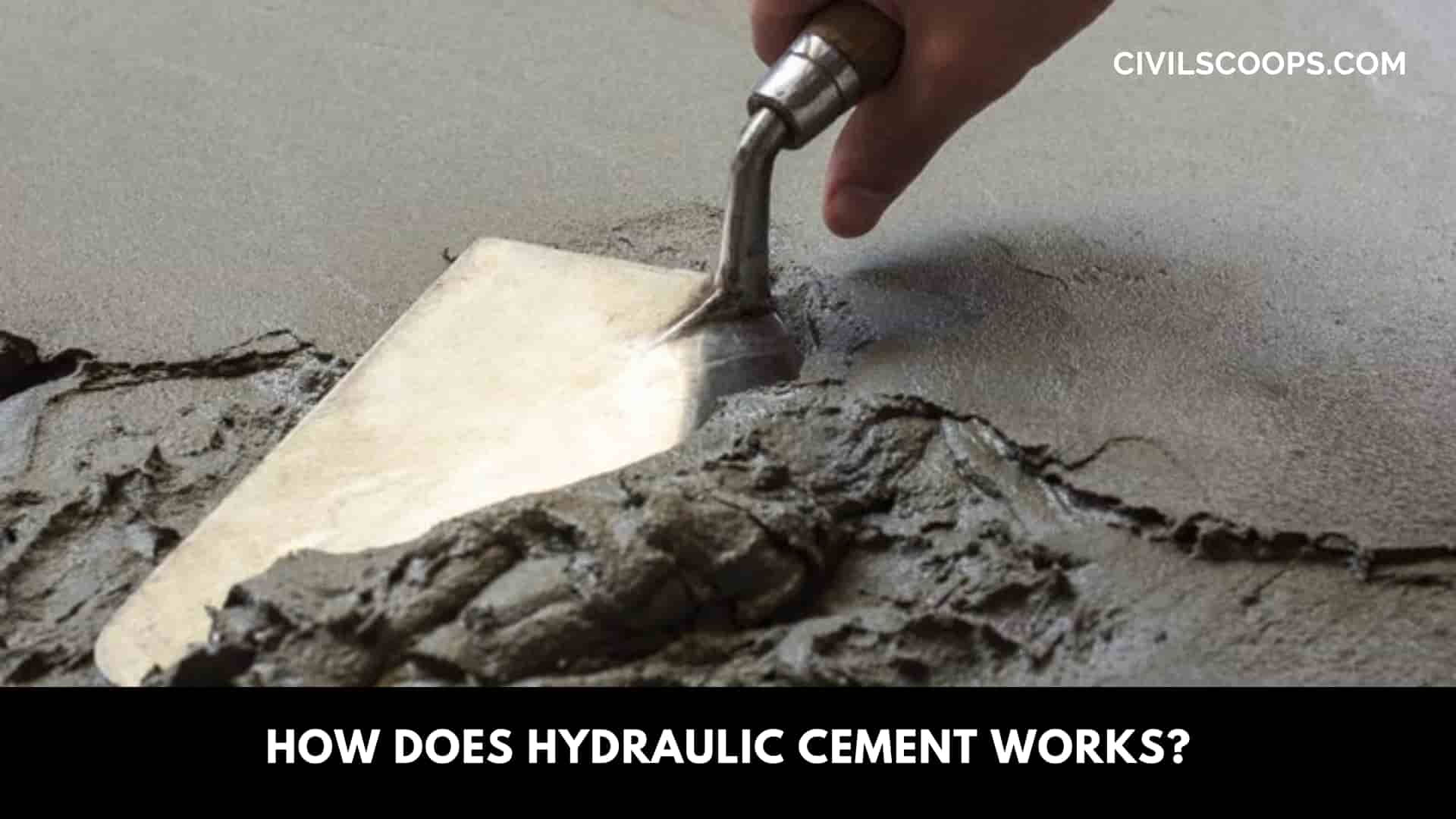
Hydraulic cement work on the principle of the process of hydration. It means that dry hydraulic cement gets hardened when it is exposed to the water.
The nature of the chemical products which are used in hydraulic cement makes it impervious to the water damages and chemical attacks.
That’s why Hydraulic cement is widely used in the construction of the structures which are in contact with water.
The main products in the hydraulic cement are calcium silicate hydrate which increases the strength of the structures and make it watertight.
Suitability of Hydraulic Cement for Construction
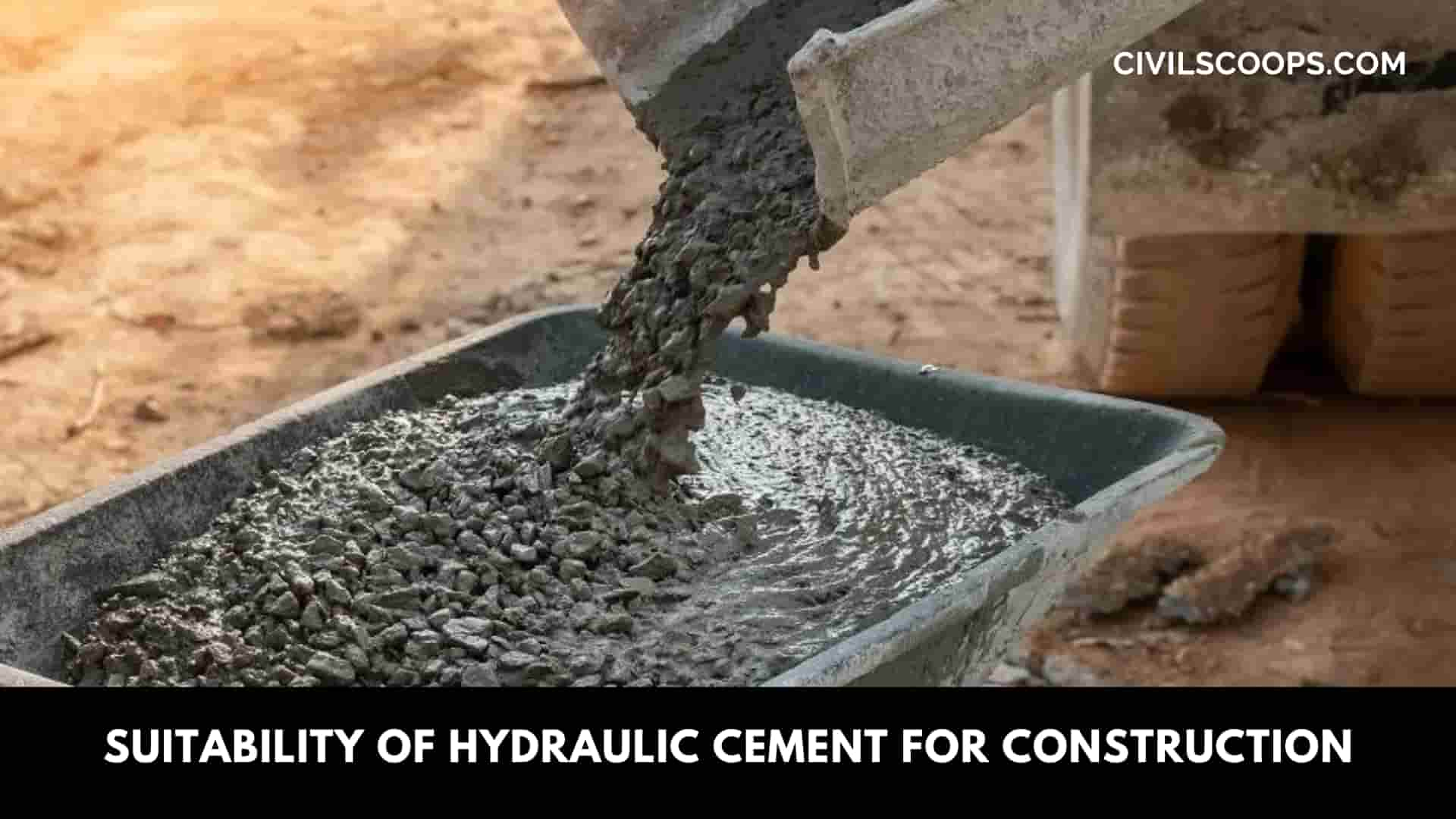
- It is important to select the right type of cement as per the nature of the Construction work.
- Hydraulic cement is suitable for the construction projects which required a fast setting and less curing time. Such types of projects give less time to work.
- It is recommended to use hydraulic cement only for the construction works which can be constructed within 10-15 minutes with a moderate amount of cement mix.
- Hydraulic cement has the ability to provide strength for the structures which are in the contact with water. This cement is used for the construction of highly durable structures.
- It is important to taken proper measures while applying the hydraulic cement in the cold climates.
- Hydraulic cement does not shrink like normal cement and some also expand while hardening. This type of hydraulic cement which has the property to expand is very useful for the sealing and repair works.
- Repairing concrete structures with Hydraulic cement is very durable and holds for many years.
Hydraulic Cement Uses
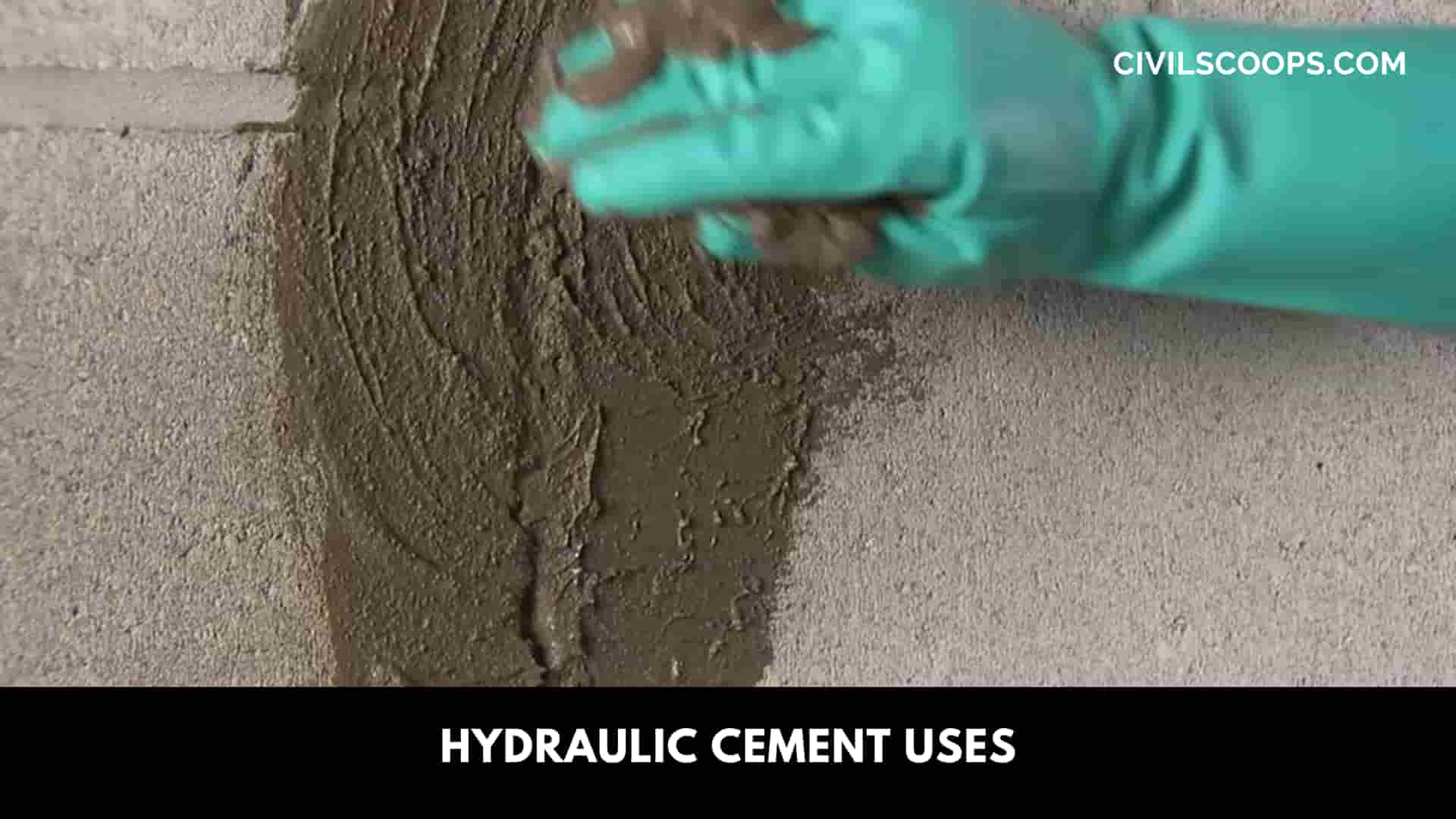
Hydraulic cement is widely used for the construction of various structures which are listed are as follows
- Swimming pools
- Foundations
- Elevator pits
- Drainage systems
- Basement walls
- Manholes
- Chimneys
- Cisterns and fountains
- Marine Applications
- For sealing the concrete and masonry structures
Hydraulic Cement Applications in Repairing Work for Civil Engineering Structures.
- Hydraulic cement grouting is also one of the commonly used methods for repairing cracks in concrete.
- Hydraulic cement is used for repairing of dormant cracks in the concrete.
- Hydraulic cement is widely used for the special Repairing work which includes.
- The repairing of the foundation.
- Repair of the cracks in the basement.
- Repairing of concrete walls, floors and driveways.
- Hydraulic cement is also used for sealing and repairing masonry as well as concrete structures.
How to Apply Hydraulic Cement?
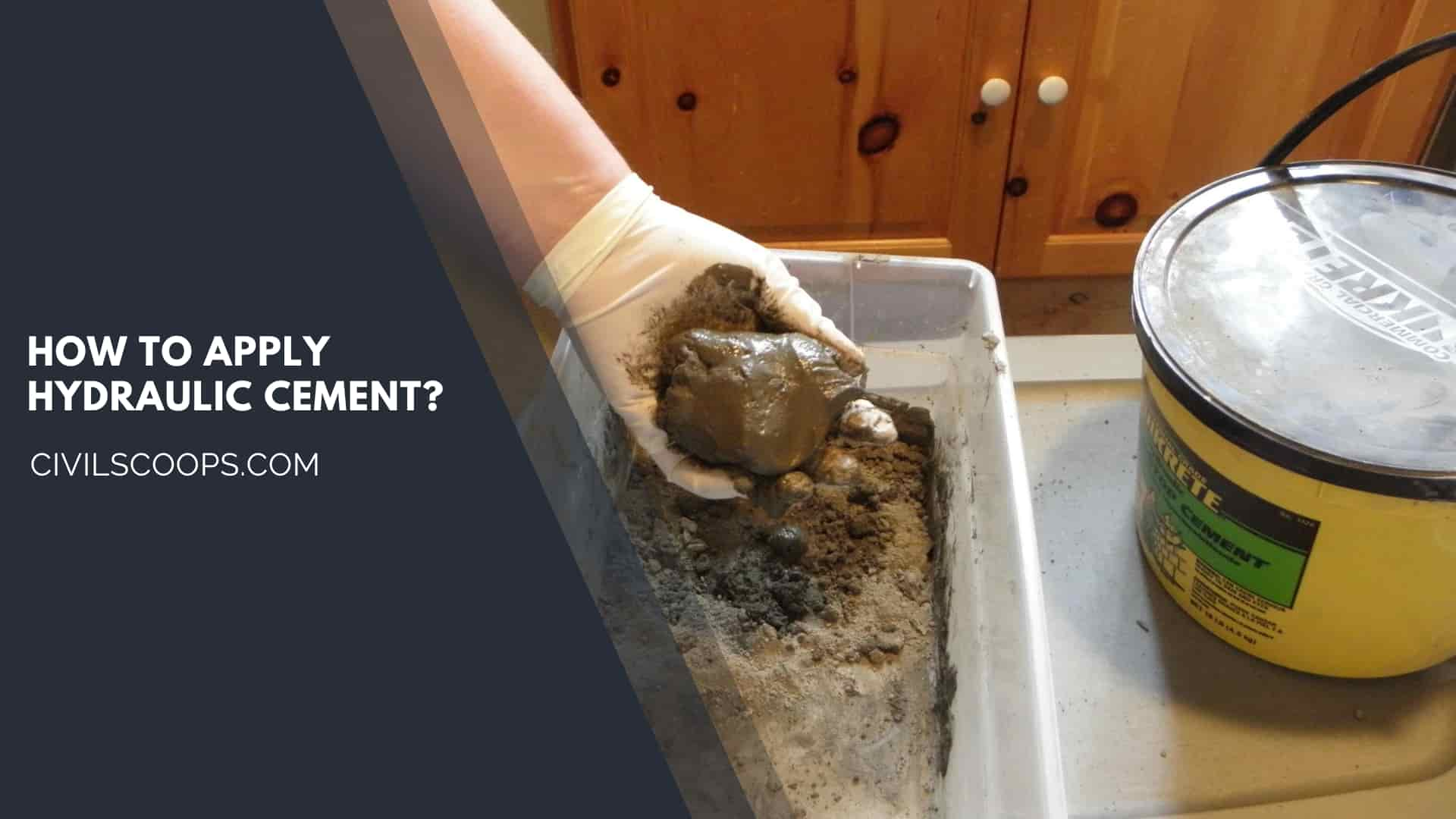
- First point clean the surface where the hydraulic cement has to be applied.
- The surface should be free from Oil dirt or any other contaminant otherwise there should not be proper Bond will be formed.
- The area where hydraulic cement to be applied should be saturated for 24 hours before its application.
- Hydraulic cement should be blended with a mechanical mixture to form the uniform mix.
- Add water in it as per the manufacturer’s recommendation.
- If there is excess water remove it otherwise there will be difficulty in its application.
- Apply the hydraulic cement wherever required.
Advantages of Hydraulic Cement
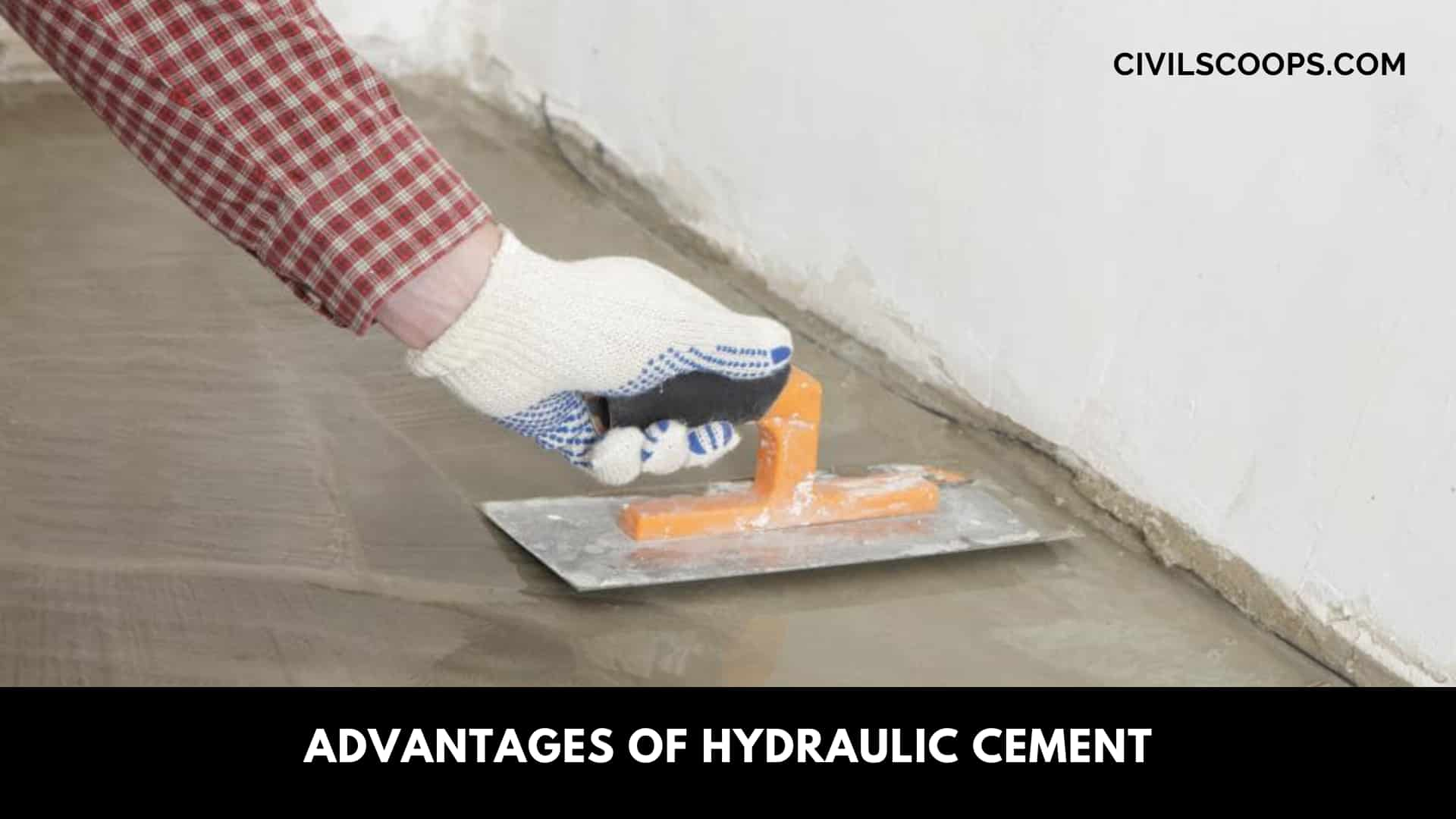
- Hydraulic cement is easy to work and apply.
- Hydraulic cement quickly sets and hardened which will help to achieve the desired strength quickly.
- Hydraulic cement is non-shrinkable and does not undergo corrosion.
- Hydraulic Cement is waterproof and can be used for the construction of underwater structures.
- Hydraulic cement is an economical solution compared to other cement products.
- Hydraulic cement is widely used for the construction of durable concrete repair works.
- Hydraulic cement can be used for sealing of the basement and other concrete leakages.
Also Read: Difference Between Lime and Cement | What Is Lime (Hydraulic) | What Is Cement
Disadvantages of Hydraulic Cement
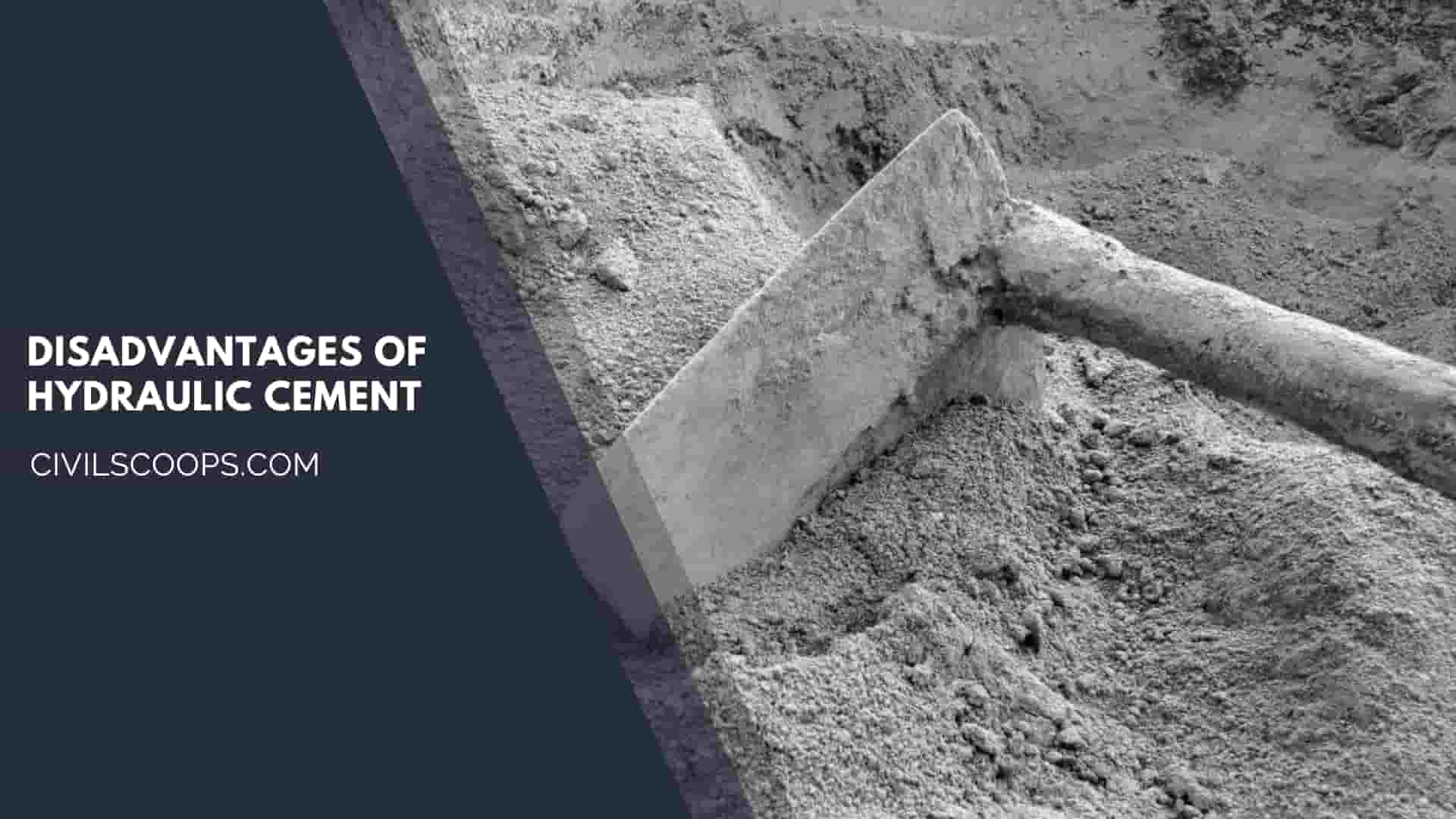
- Hydraulic cement gets hardened very quickly so it is very necessary to use it within 10 to 15 minutes of mixing.
- The Hydraulic cement cannot be used for the frozen surfaces.
- Hydraulic cement is not flexible only suitable for providing mechanical support.
- Hydraulic cement cannot be used for the areas where the is below 48°F.
[su_box title=”FAQ” style=”default” box_color=”#333333″ title_color=”#FFFFFF” radius=”3″ class=”” id=””]
What Is Hydraulic Cement?
Hydraulic cement is a type of cement that sets and hardens when mixed with water. It is used in many construction and repair projects, from fixing cracks in sidewalks to lining the bottom of ponds. It usually consists of a fine powder made from limestone, clay or gypsum.
What Is Hydraulic Cement Good For?
Hydraulic Cement is ideal for interior and exterior applications to stop the seepage of water through cracks and faults in concrete and masonry structures such as: Dams, basements, swimming pools, manholes. Cisterns, water tanks, underground electric vaults. Elevator pits, mines, tunnels, sewers, culverts.
What Is the Best Hydraulic Cement to Use?
If you’re looking for the best hydraulic cement to seal cracks in concrete or masonry structures or any other waterproofing products, look no further than DRYLOK.
Is Hydraulic Cement Waterproof?
Hydraulic cement stops water leaks. It’s an excellent waterproof product, but since it has such a quick dry time, it’s impractical for large projects.
Is Hydraulic Cement Good for Foundation Cracks?
Hydraulic Cement
It’s effective for sealing foundation cracks but should not be used alone. Hydraulic cement does a fantastic job sealing the outside of a crack as it provides a strong waterproof seal. However, it has a high viscosity and can’t penetrate deep into the crack where most of the fissure resides.
How Strong Is Hydraulic Cement?
Hydraulic cement is more durable than regular cement and can be used in wet or dry conditions, as well as above or below ground. It is also resistant to chemicals and heat. It can be applied underwater and will cure even when exposed to high levels of moisture.
Hydraulic Cement Uses
9 Uses for Hydraulic Cement
- Foundations. Source. Cracks can form in your foundation for various reasons.
- Basement Walls. Source.
- Swimming Pools. Source.
- Chimneys. Source.
- Cisterns and Fountains. Source.
- Drainage Systems. Source.
- Elevator Pits. Source.
- Manholes. Source.
How to Use Quikrete Hydraulic Water Stop Cement?
Press the Water-Stop cement into the crack using heavy pressure and hold in place for several seconds. After the material has become “thumbprint” hard, use a margin trowel to trim the patch to match the contour of the surrounding surface. The Water-Stop repair can be painted after 7 days with a water-based latex paint.
Can I Use Hydraulic Cement Outside?
Hydraulic Cement is ideal for interior and exterior applications to stop the seepage of water through cracks and faults in concrete and masonry structures such as: Dams, basements, swimming pools, manholes.
Why Is It Called Hydraulic Cement?
The term “hydraulic” refers to the fact that the cement sets, hardens and develops strength via the hydration of its component compounds or cement minerals. The primary raw material used to make portland cement is limestone, usually accounting for 90 percent of the raw material.
[/su_box]
[su_note note_color=”#F2F2F2 ” text_color=”#333333″ radius=”3″ class=”” id=””]
Like this post? Share it with your friends!
Suggested Read –
- Top 20 AAC Block Company in India
- All About Transom Window | What Is a Transom Window | Types of Transom Window
- All About Sandbag Cofferdam | What Is Sandbag Cofferdam | Advantages of Sandbag Cofferdam
- Detail of Beam Connection | Simple Framing Connection | Semi-Rigid Framing Connection | Rigid Frame Connection
- What Is Bulking of Sand | Bulking of Sand Is Caused Due to | Bulking of Sand Graph | Bulking of Sand Formula | Test Procedure to Determine the Bulking of Sand
[/su_note]
Originally posted 2023-05-04 11:28:43.
